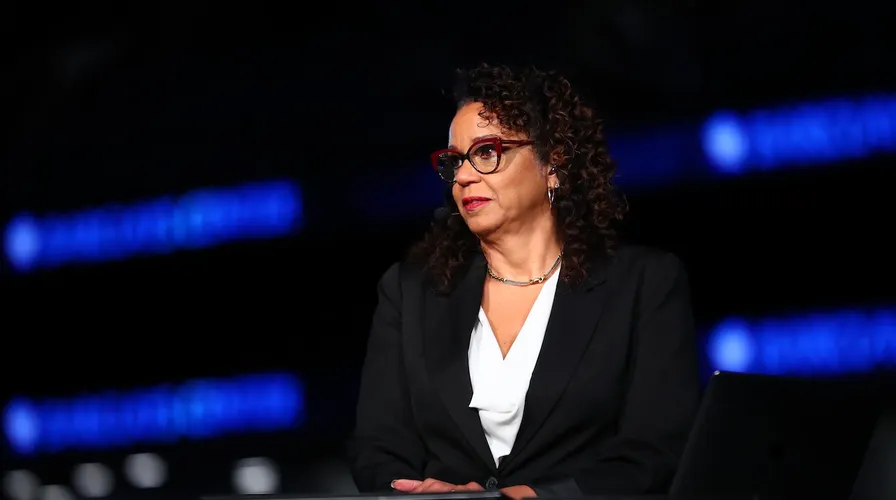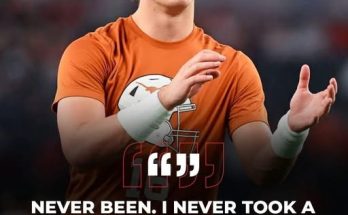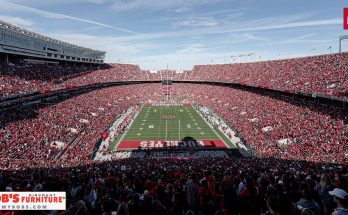Controversy erupted across the sports world when an ESPN analyst suggested that the Indiana Fever plays better basketball without Caitlin Clark, the No. 1 overall draft pick and one of the most polarizing figures in women’s sports today. The comments—made during a national broadcast segment—ignited immediate backlash, with fans, analysts, and former players questioning both the timing and accuracy of the claim. Despite the bold assertion, a closer examination of the Fever’s performance with and without Clark tells a different story, one rooted more in narrative manipulation than in data-driven insight.
Caitlin Clark entered the WNBA with a level of hype and expectation rarely seen in the sport. Coming off a legendary collegiate career at Iowa, where she shattered scoring records and led her team to back-to-back NCAA championship game appearances, Clark brought new eyes, new fans, and a major spike in TV ratings to the WNBA. Her arrival to the Indiana Fever signaled not just a chance at a franchise turnaround but also a transformation of the league’s broader popularity. Merchandise sold out, games were moved to bigger arenas, and suddenly the Fever—long a bottom-feeder in the league—were under a microscope.
So when the ESPN analyst suggested that the team actually performs better without Clark, it was a shock to many. The insinuation didn’t just target Clark’s on-court ability—it undermined her influence on team dynamics, strategy, and growth. On its surface, the argument was that Indiana’s ball movement, tempo, and spacing had improved during the stretches Clark missed due to injury or rest. However, fans and statheads alike quickly dove into the numbers, and what they found didn’t quite back the claim.
Statistically, the Fever has shown clear signs of growth since Clark joined the lineup. Not only has she led the team in assists per game—often drawing double teams and opening up looks for teammates—but her presence stretches the defense in ways no other player on the roster can. While the team’s record remains below .500, their offensive efficiency, points per game, and assist totals have all increased significantly with Clark on the court. In fact, several advanced metrics, including offensive rating and plus-minus data, show that Indiana performs markedly better when Clark is leading the charge.
The ESPN analyst’s comments came during a heated panel discussion about the WNBA’s midseason surprises. When the topic turned to the Fever’s recent stretch of competitive games without Clark in the lineup, the analyst claimed, “You look at the way they play—there’s more flow, more cohesion, maybe even more confidence when Clark isn’t on the floor.” That sparked immediate criticism online, with fans accusing the analyst of pushing an anti-Clark agenda or trying to drive controversy for attention.
Former WNBA players and coaches weighed in, some defending the analyst’s right to critique, while others were more direct in their rebuttal. “This isn’t about hating Caitlin Clark,” said one ex-coach on a competing network. “But if you’re going to make bold claims like that, you better have the data to back it up. And the data just doesn’t support it.”
Clark herself has not publicly commented on the controversy, though her play on the court has done much of the talking. In games following the controversy, she has continued to log impressive stat lines, racking up double-doubles and showing more chemistry with her teammates. She has remained a constant competitor, often leading huddles and providing energy even during tough losses.
It’s worth considering the environment Clark entered when she joined the WNBA. The Indiana Fever were not a team built for immediate contention. The roster is young, and the team has struggled with consistency, injuries, and finding the right rotation. To put the burden of instant turnaround squarely on Clark’s shoulders is not only unfair—it’s a misreading of how basketball works at the professional level. Rookies, no matter how talented, need time to adjust to the physicality and speed of the league. They need veterans to complement their game. They need coaching systems that maximize their strengths.
The controversy also opened up a broader discussion about the treatment of women athletes in media narratives. Many fans argued that the analyst’s comments fit a pattern of diminishing female athletes who draw widespread popularity or defy traditional norms. Clark’s fame, driven in part by her flashy style, deep three-point range, and unapologetic confidence, has made her a lightning rod for both praise and criticism. Where some see a generational talent lifting the league, others seem more inclined to question her credentials, her attitude, or her fit within team structures.
Social media amplified the debate, with hashtags like #ClarkEffect and #LetHerCook trending across platforms. Supporters highlighted Clark’s game tape, noting her court vision, passing creativity, and ability to score at all three levels. Critics, meanwhile, dug into turnover stats or off-ball movement critiques in an effort to sustain the analyst’s original claim.
But perhaps the most telling reaction came from Clark’s teammates. Several Fever players took to social media and interviews to voice their support for the young star. One teammate tweeted, “We’re better with Caitlin. Period. Don’t let anyone twist the story.” Another shared a behind-the-scenes photo of the team celebrating after a close win, captioned with, “We ride together.”
The Fever organization has also stood firmly behind Clark. In press conferences, head coach Christie Sides praised Clark’s maturity, her work ethic, and her willingness to learn. “She’s not just a scorer,” Sides noted. “She sees the floor as well as any player I’ve coached. And what she brings to our locker room is immeasurable.”
As the Fever continue their season, one thing is certain: Caitlin Clark’s presence is not a hindrance—it’s a foundation. The young guard has drawn sellout crowds, boosted league visibility, and injected a level of electricity rarely felt in Indiana basketball since the glory days of Tamika Catchings. Her learning curve is natural, and her mistakes are expected, but her impact is undeniable.
What this controversy reveals is less about Clark’s game and more about the shifting landscape of women’s sports. The rise of social media, the explosion of NIL deals, and the surge in mainstream coverage mean every moment is magnified. Athletes like Clark are navigating an unprecedented spotlight, and with that comes both admiration and scrutiny.
In time, the noise will quiet, and the numbers will speak for themselves. As the Fever’s chemistry continues to build and Clark finds her rhythm as a leader, the narrative will inevitably shift. For now, though, the statement made by one analyst has reignited the debate over how we talk about greatness, how we support young stars, and how much weight we give to hot takes versus hard evidence.
The Indiana Fever is a team in transition, and Caitlin Clark is the centerpiece of that transformation. Whether critics accept that or not, the fans clearly do—and that’s a win that can’t be measured on any stat sheet.


